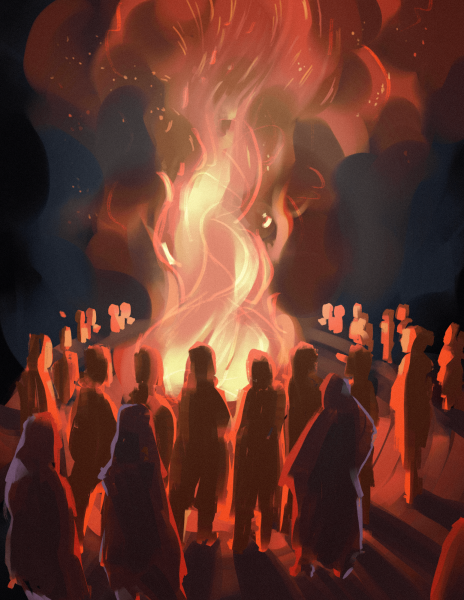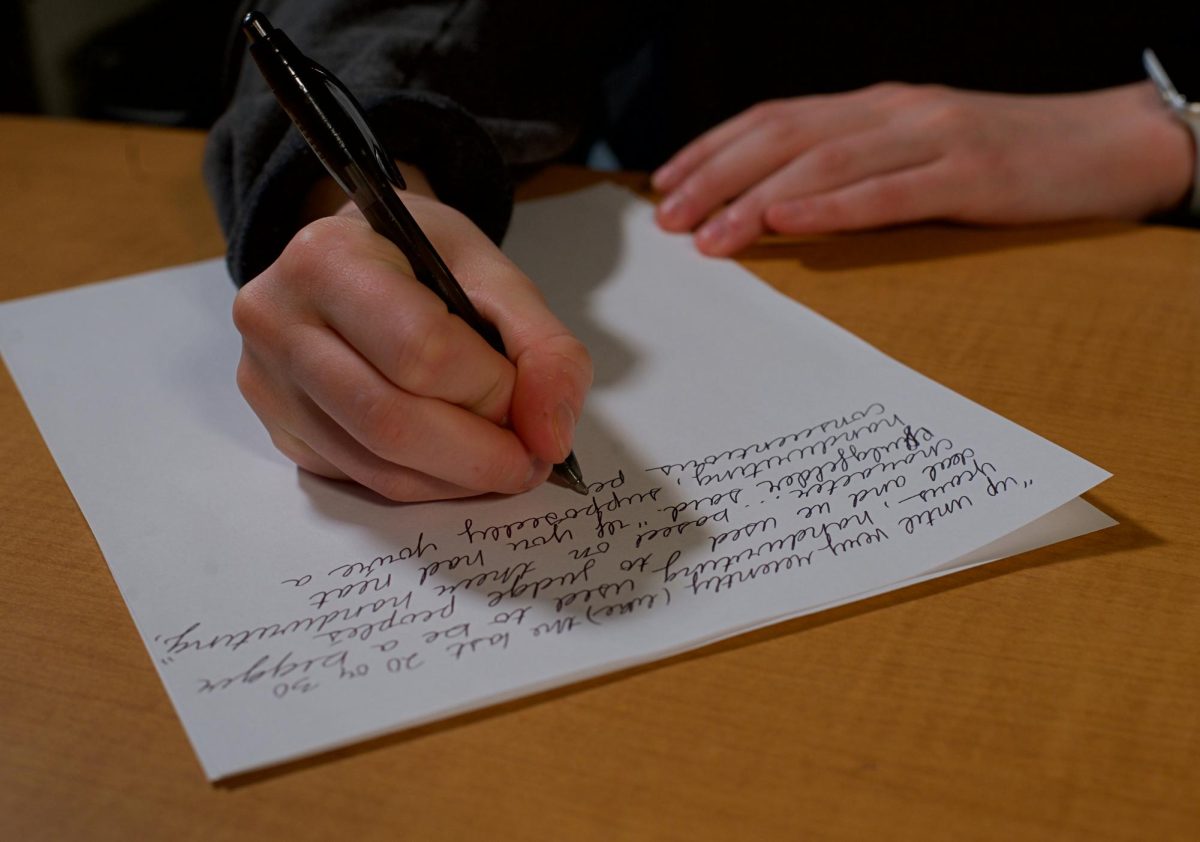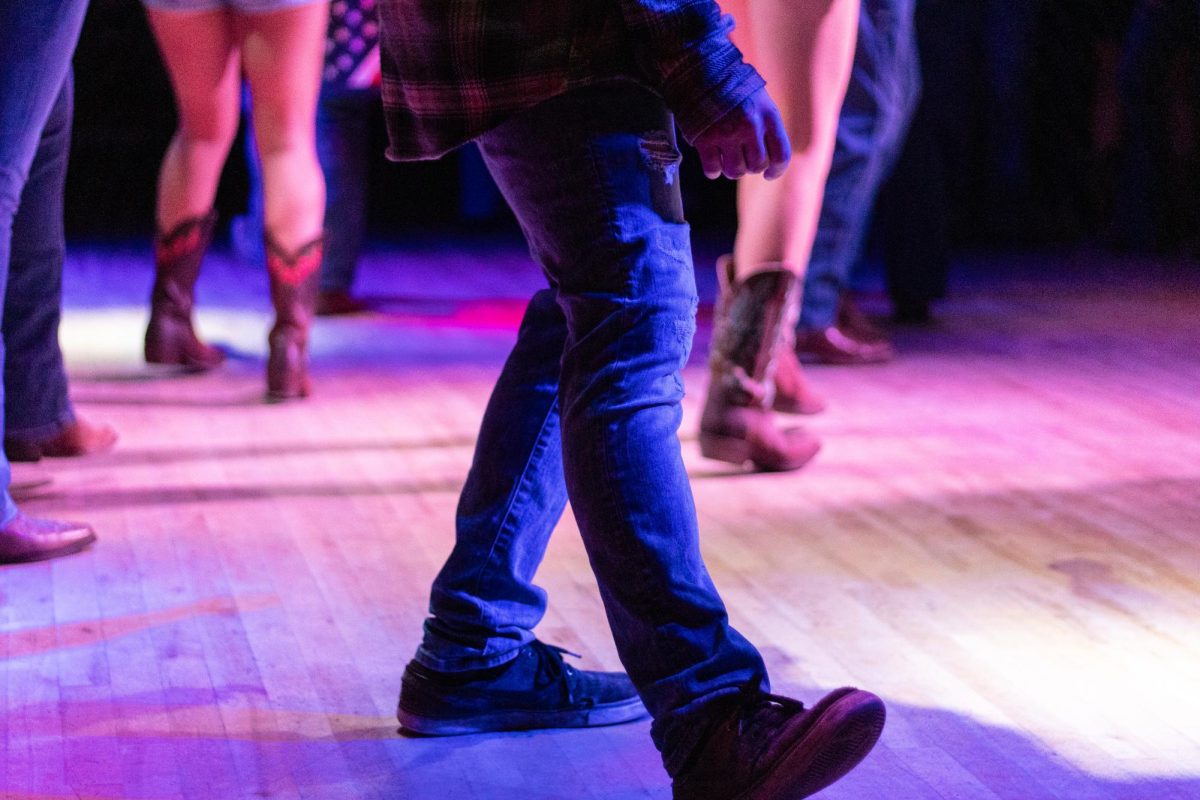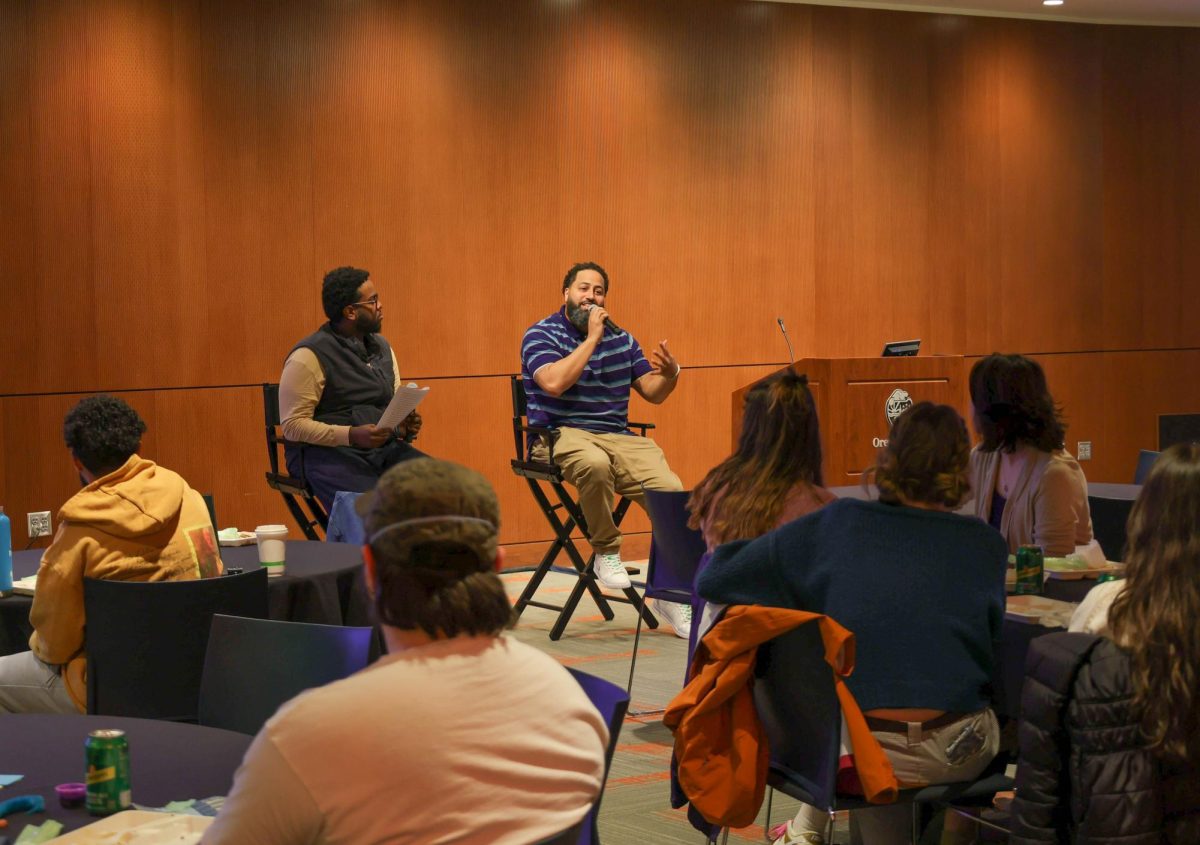A lightbulb seems to go on right over your head. You quickly scramble for your quill, ink and scroll. You’re hurrying to get the fantastic idea you had down on paper; written into history forever.
You put the ink to paper, picking up the quill every time to write each and every important letter.
Oh no! Your quill breaks and your ink dries out. Your idea starts to fade. You struggle to find another quill but it’s too late, your idea is gone.
If only you had a faster way to write, a way of writing that doesn’t require the continuous on-and-off poking of paper. Wait… what about cursive handwriting?
Cursive handwriting dates back to the medieval ages and was created for these purposes: less time for ink to dry and less quill damage. Although it didn’t become standardized until the 17th and 18th centuries, according to The Spectrum.
The art of cursive writing has been decreasing due to accessible technology and keyboard typing. The first decline was seen in the 20th century due to people making the switch from paper to typewriters, according to Edotopia.
Cursive writing was officially removed from the K-12 curriculum in 2010, leaving those who want to learn the skill to fend for themselves. However, some Oregon State University college students still practice their cursive, relying on the skills they were earlier taught in school.
Out of 58 OSU students surveyed in an Instagram poll, 50% said they know how to write in cursive but don’t often. Additionally, 24% said they sometimes write in cursive, 17% said they don’t know how to write in cursive and 9% said they write in cursive most if not all, the time.
“I learned in elementary school and kind of picked it up on my own recently,” said Andrew Ingham, a fourth-year construction engineering management student.
Ingham started writing in cursive again during his first year in college for efficiency reasons. He also pairs the age-old skill with newer technology, mixing the two polar opposite practices.
“I started using a tablet to write on for taking notes and keeping pen strokes to a minimum feels nice while (writing in cursive),” Ingham said.
Ingham also believes cursive writing should be taught in schools again so students can learn better penmanship and “help them with better handwriting as a whole … even if a student doesn’t necessarily stick with writing in cursive,” Ingham said.
“My cursive writing was way prettier than my print,” said Hollyn Kampfer, a fourth-year business administration major, describing why she switched to only writing in cursive. “And I liked that it was unique to write in cursive.”
Ehren Pflugfelder, an associate professor of scientific and technical writing, agrees that cursive use is on the decline and said “It’s definitely falling out of fashion.”
Pflugfelder doesn’t practice cursive himself but said his parents and his partner’s parents do, noting many older generations still use the art.
“My mom has amazing cursive,” Pfulgfelder said. “It’s all slanted and all the letters are perfect, all very compact.”
Pfulgfelder said he only writes in cursive occasionally to sign his signature and noticed his students sometimes write in cursive but usually their own version of it.
“Honestly it’s not true cursive, I kind of do a mixture of cursive and non-cursive,” said Issac Reeber, a fifth-year mechanical engineering student, who writes in his version of cursive nearly every time he writes. He says he finds cursive faster and neater than regular handwriting.
Pfulgfelder believes that cursive could still be a part of a school’s curriculum and believes that teaching regular script writing is important to understand handwriting and be literate. He also noted that people can learn the art on their own time, like you would with calligraphy.
“Up until very recently, (like) the last 20 or 30 years, handwriting used to be a bigger deal and we used to judge people’s character … based on their handwriting,” Pfulgfelder said. “If you had neat handwriting, supposedly you’re a conscientious person.”
Luckily this isn’t much of the case anymore, Pfulgfelder said. Although, the majority of us would probably agree that cursive does catch the eye.
If you do decide to practice this “unique” kind of writing, maybe get some ink and a quill to go with it.




















